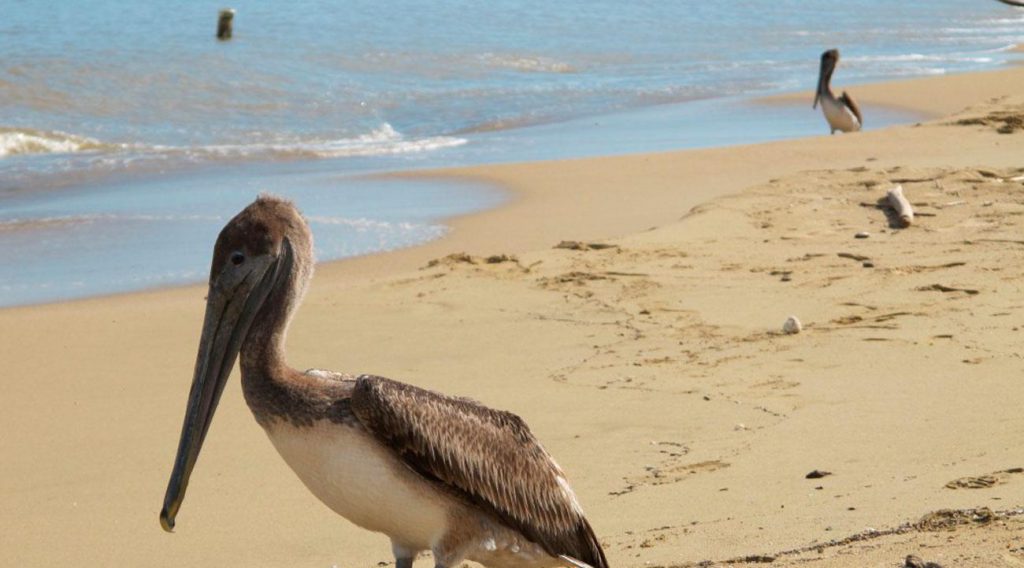Content
Puerto Rico, the country on the "Island of Enchantment," is a paradise for nature lovers, and the Tres Hermanos Beach National Park (in Spanish: Parque Nacional Balneario Tres Hermanos) is one of its best-kept secrets. With its lush landscapes, white sandy beaches, and variety of flora and fauna, this park promises an unforgettable experience. Discover why this corner of Puerto Rico should be on your list of places to visit.
National Park Information
Location and Access
Located in the municipality of Añasco, on the west coast of Puerto Rico. Access to the park is straightforward, and you can reach it by car from the major cities.
Brief Park History
This park, named in honor of the famous pirate brothers who, according to legend, used to use this area as a hideout, is a gem for all who visit it.
Geography and Climate
The park enjoys a tropical climate year-round and is characterized by its beautiful beach flanked by coastal shrub vegetation.
Flora and Fauna
The park is home to a diversity of wildlife, from native birds to interesting insects and reptiles. The park’s flora is equally diverse.
Activities in the Park
Accommodation and Camping Options
The park offers various accommodation options, from camping to nearby hotels. However, it’s recommended to book in advance.
Hiking and Exploration Routes
The park’s trails offer the opportunity to explore Puerto Rico’s untouched nature, with routes for all skill levels.
Water Activities
From swimming in the clear waters of the beach to snorkeling to explore underwater life, the park offers diverse water activities.
Photography and Bird Watching Opportunities
The park is a paradise for nature photographers and bird-watching enthusiasts, thanks to its biodiversity and strategically located observation points. Capture stunning images of exotic birds in their natural habitat and enjoy the thrill of witnessing unique species in flight.
Visit Planning
Best Season to Visit
The park can be visited year-round, but the best season to enjoy the warm weather and water activities is usually from March to October.
What to Bring?
It’s recommended to bring sunscreen, insect repellent, swimwear, comfortable walking shoes, water, and a camera to capture the park’s beautiful landscapes and wildlife.
Park Rules and Regulations
To ensure the park’s protection, it’s important to follow established rules, such as not bringing pets, not harming flora and fauna, and respecting speed limits when driving through the park.
Contact Information and Additional Resources
For up-to-date information about Tres Hermanos Beach National Park, including hours, fees, and special events, you can visit the park’s official website or get in touch with park management through the provided phone numbers or email addresses on their webpage.
Points of Interest Tour
Tres Hermanos Beach
Tres Hermanos Beach is the main attraction of the park, with its crystal-clear waters, white sands, and stunning natural surroundings. It’s perfect for relaxation, swimming, and enjoying beautiful sea views.
Viewpoints and Picnic Areas
The park features strategically located viewpoints that offer panoramic views of the coast and its surroundings. There are also designated picnic areas where visitors can enjoy outdoor meals surrounded by nature.
Other Notable Features
In addition to the beach, the park hosts natural trails that allow exploration of different ecosystems, such as mangroves and coastal forests. Endemic bird species and a variety of native plants can also be found in the park. Another notable aspect is the presence of caves that offer the opportunity to explore rock formations and learn about local geology.
Conservation and Sustainability of the Protected Area
Current Conservation Initiatives
Tres Hermanos Beach National Park is actively committed to conserving its natural environment. Wildlife preservation programs, habitat restoration, and environmental education are carried out to promote long-term sustainability.
How Can Visitors Contribute?
Visitors can help preserve this beautiful park by following established rules and regulations, respecting flora and fauna, and avoiding littering. Additionally, they can engage in volunteer activities and support local conservation projects.
